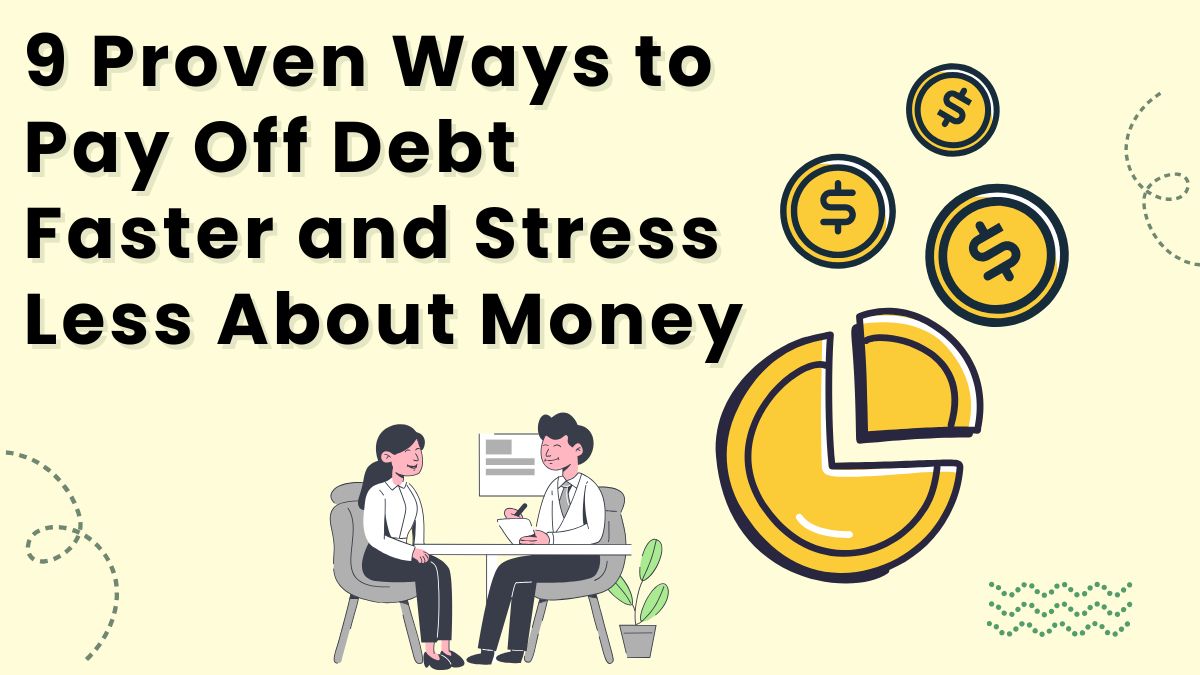A strategic approach to debt management can help you regain financial freedom. Creating a budget and tracking income and expenses are the first steps to identifying unnecessary expenses and allocating funds for debt repayment. By listing all your debts and organizing them by interest rates or balance, you can choose between the avalanche method, in which high-interest debts are prioritized, or the snowball method, in which smaller balances are cleared first to motivate you.
The process can be accelerated by increasing your income through a side hustle, a raise, or a career advancement, and by eliminating unnecessary expenses like dining out and unused subscriptions. By automating payments, you won’t miss deadlines, and negotiating with creditors might result in lower interest rates. When making major purchases, use cash instead of credit to avoid taking on new debt.
Keeping your financial goals in sight can be achieved by celebrating small victories and tracking your progress. Reduced debt becomes manageable with consistency and commitment, paving the way for a debt-free and secure financial future. Getting started is easy with these nine tips:
1. Create a Budget: The Blueprint for Debt Reduction
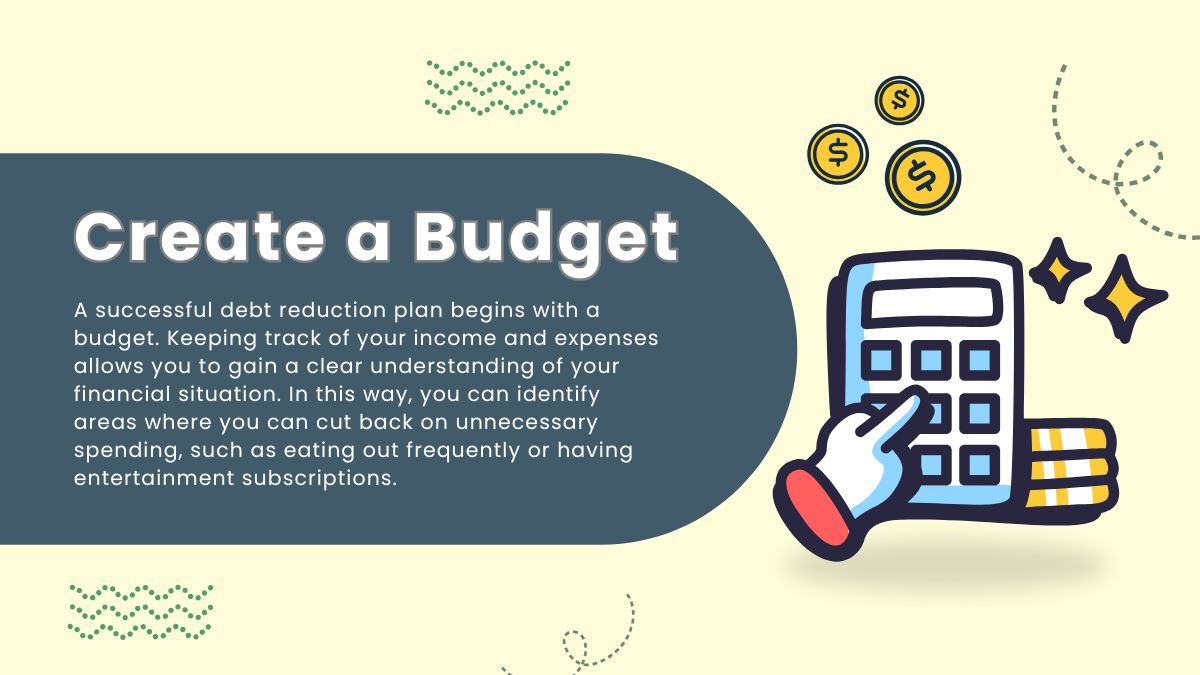
A successful debt reduction plan begins with a budget. Keeping track of your income and expenses allows you to gain a clear understanding of your financial situation. In this way, you can identify areas where you can cut back on unnecessary spending, such as eating out frequently or having entertainment subscriptions.
When you prioritize essential expenses, such as rent, utilities, and groceries, you ensure that you meet your basic needs while allocating the remaining funds to debt repayment. To achieve optimal results, make sure you set a realistic budget that you can consistently follow.
2. List Your Debts
You must list your debts before you can develop a targeted debt repayment strategy. Bring all your debt statements, including credit card statements, loan statements, and anything else you owe. Rank them according to interest rate, starting with the highest (the “avalanche” method).
The “snowball method” can also be used to list them smallest to largest. Avalanche methods minimize the total interest paid over time, while snowball methods build momentum by eliminating smaller debts quickly.
3. Prioritize Your Debts
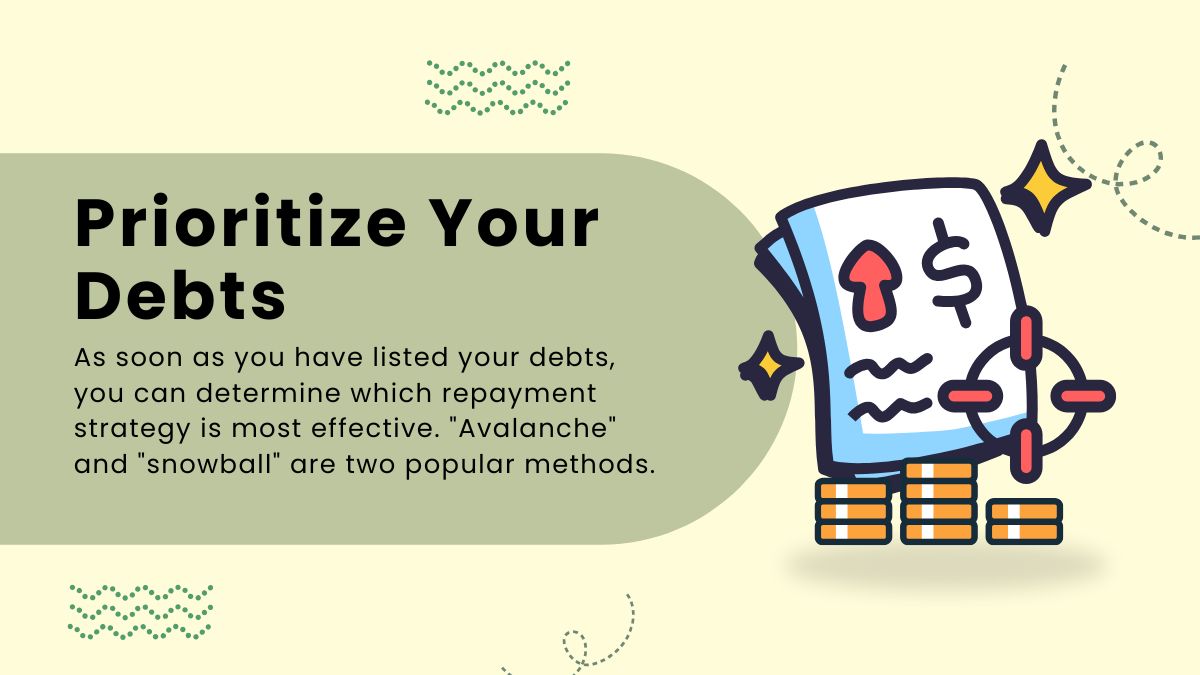
As soon as you have listed your debts, you can determine which repayment strategy is most effective. “Avalanche” and “snowball” are two popular methods. In the avalanche method, the highest interest rate debts are paid off first, minimizing the overall interest paid. Generally, this is the most advantageous approach from a financial standpoint.
According to the snowball method, the smallest debts should be paid off first, regardless of interest rates. As a result, you can gain a psychological boost by eliminating smaller debts and feeling accomplished.
The best method for you will depend on your financial situation, personality, and motivation level. Choose a strategy based on your financial goals that you believe will be effective and sustainable.
4. Increase Your Income
You can accelerate debt repayment by increasing your income. Get a job as a freelancer, drive for a rideshare service, or sell crafts online to increase your earnings. Your employer may consider giving you a raise if you excel in your current role. If you want to increase your income by a significant amount, you might consider further education or changing careers in a higher-paying field. You will be able to repay your debt more quickly if you increase your income stream.
5. Cut Unnecessary Expenses
In any debt reduction plan, reducing unnecessary expenses is a crucial step. Take a close look at your spending habits and find areas where you can make savings. In order to do this, you may need to reduce dining out, limit entertainment expenses, cancel unused subscriptions, or find cheaper alternatives to everyday items.
For example, cooking more meals at home instead of frequenting restaurants can significantly reduce food costs. By taking advantage of free or low-cost entertainment options like parks, community events, or the library, you can have fun and save money.
You can free up more funds to repay your debt by examining your spending carefully and eliminating unnecessary expenses.
6. Automate Your Payments
By automating your debt repayment process, you can simplify the repayment process and reduce the risk of missed payments. Organize your bank account so that automatic payments can be made directly from it for your minimum debt payments or higher amounts. You can avoid late fees and credit score damage by making on-time payments.
7. Negotiate with Creditors
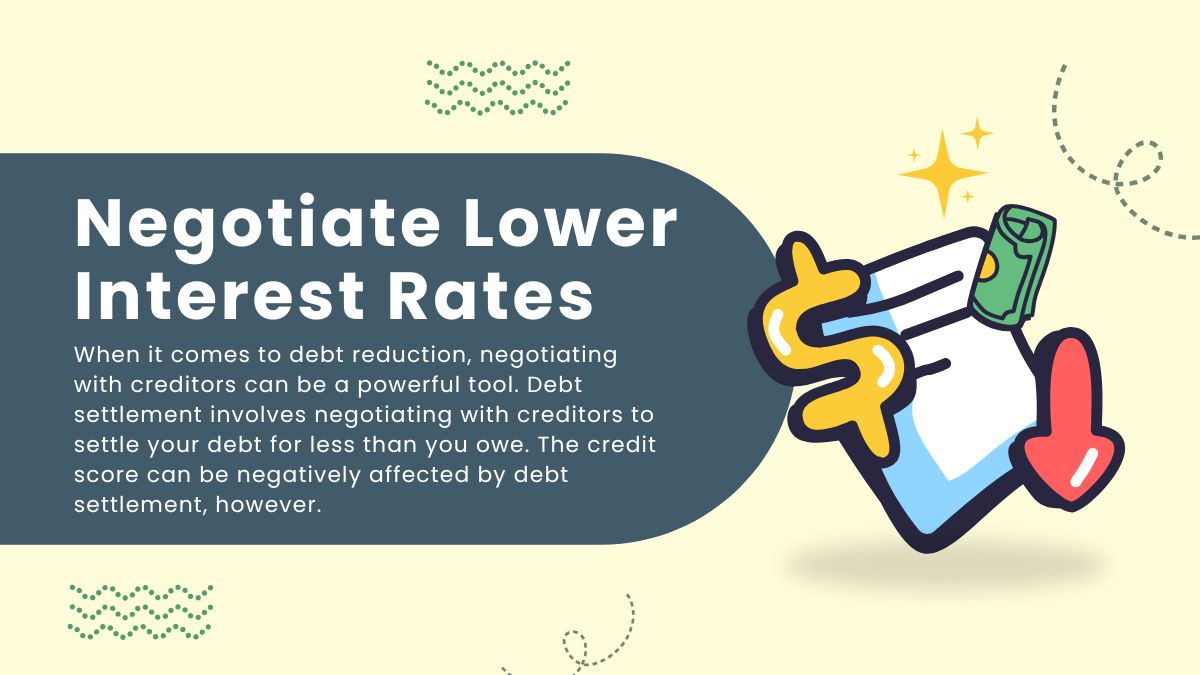
When it comes to debt reduction, negotiating with creditors can be a powerful tool. Debt settlement involves negotiating with creditors to settle your debt for less than you owe. The credit score can be negatively affected by debt settlement, however.
A debt management plan is another option. If you need help reducing interest rates, consolidating payments, or organizing a manageable repayment plan, you may benefit from the services of a non-profit credit counseling agency.
You must understand your rights and options before negotiating with creditors. An advisor or counselor who specializes in financial or credit counseling can be a valuable resource throughout the negotiation process.
8. Avoid Taking on More Debt
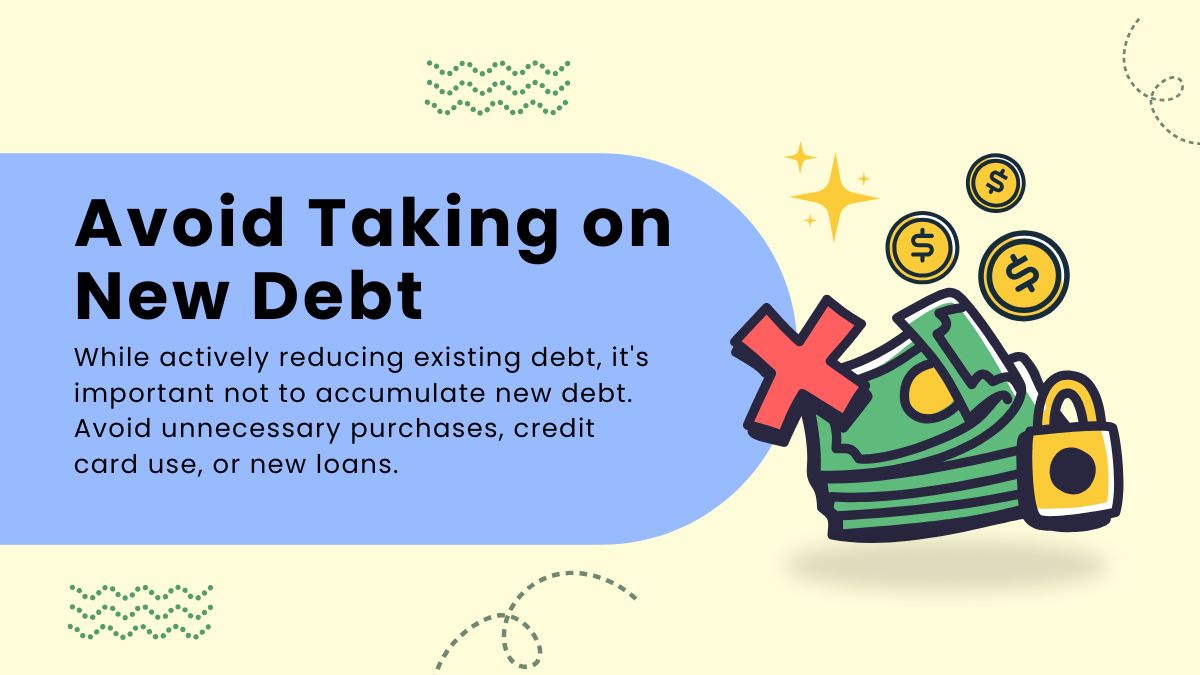
While actively reducing existing debt, it’s important not to accumulate new debt. Avoid unnecessary purchases, credit card use, or new loans.
Utilize cash whenever possible and live within your means. Make major purchases without relying on credit by saving up beforehand. The sooner you avoid new debt, the faster you’ll progress towards financial freedom.
9. Stay Motivated and Consistent
In order to reduce debt, you must remain motivated and consistent. You should celebrate small victories along the way, such as paying off a smaller debt or making a significant dent in a larger debt. Maintain a regular budget review and track your progress to stay motivated.
Acknowledge and appreciate the progress you’re making toward your financial goals. In this way, you will remain motivated and persevere in the face of challenges. Consult a financial advisor, credit counselor, or a trusted friend if you feel overwhelmed or discouraged. It’s a journey, not a race, to reduce debt. Commit to your plan, and you’ll succeed in achieving your financial goals.
Read this comparison UPI vs. Credit Card: Which is Better?
Final Thoughts
Debt reduction can be a challenging but rewarding process. These strategies can help you regain control of your finances and meet your financial goals if you implement them consistently. Every step toward debt freedom, no matter how small, counts.
Keep your commitments, be patient, and celebrate your successes. Debt can be overcome and a better financial future can be built with dedication and perseverance.

